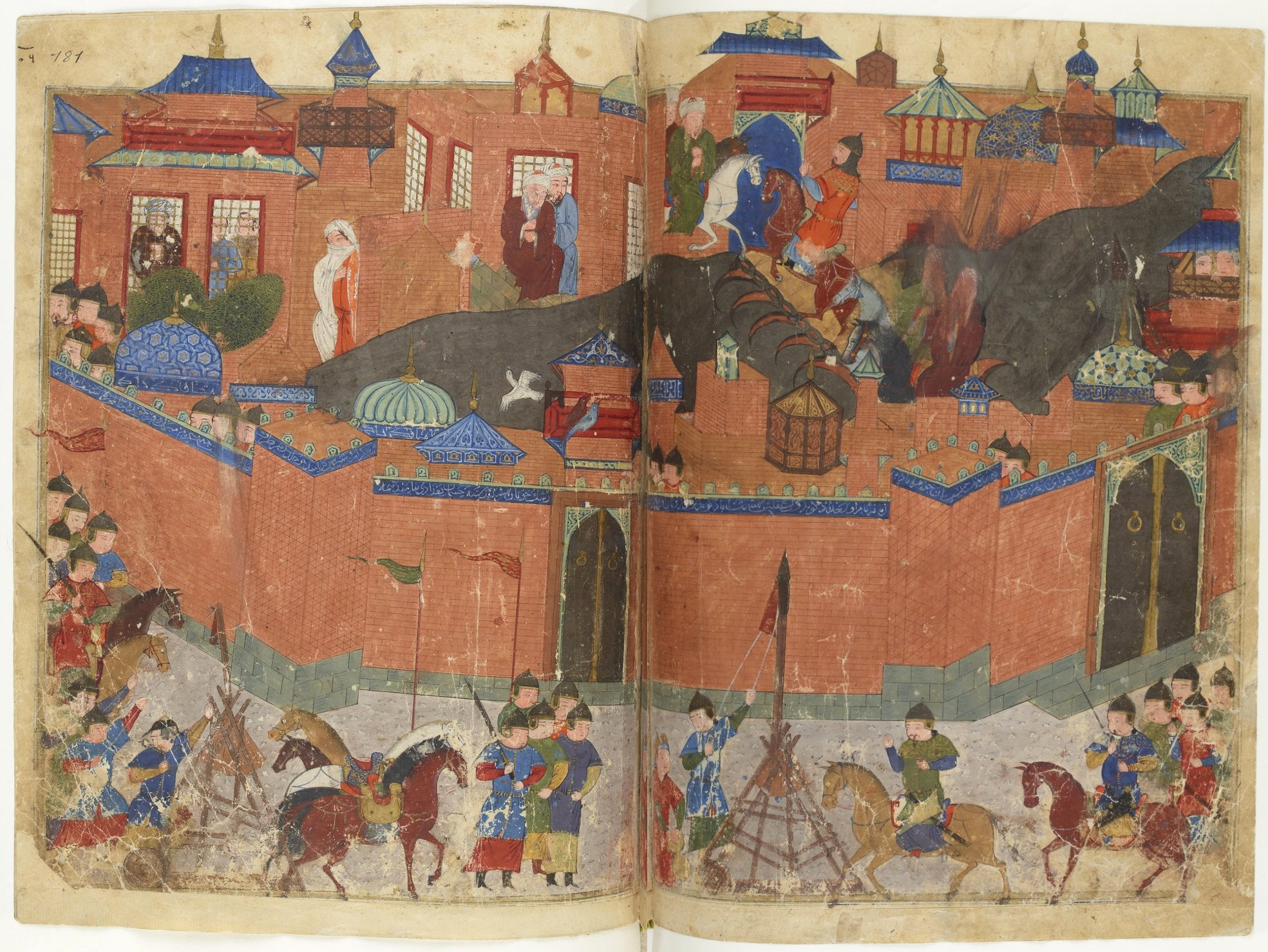
Siege of Baghdad
The siege of Baghdad took place in early 1258 at Baghdad, the historic capital of the Abbasid Caliphate. After a series of provocations from the city's ruler, Caliph al-Musta'sim, a large army under the Mongol prince Hulegu attacked the city. Within a few weeks, the city fell and was sacked by the Mongol army—al-Musta'sim was killed alongside hundreds of thousands of his subjects. The city's fall has traditionally been seen as marking the end of the Islamic Golden Age; in reality, its repercussions are uncertain.
For other uses, see Battle of Baghdad.
After the accession of his brother Möngke Khan to the Mongol throne in 1251, Hulegu, a grandson of Genghis Khan, was dispatched westwards to Persia to secure the region. His massive army of over 138,000 men took years to reach the region but then quickly attacked and overpowered the Nizari Ismaili Assassins in 1256. The Mongols had expected al-Musta'sim to provide reinforcements for their army—the caliph's failure to do so, combined with his arrogance in negotiations, convinced Hulegu to overthrow him in late 1257. Invading Mesopotamia from all sides, the Mongol army soon approached Baghdad, routing a sortie on 17 January 1258 by flooding their camp. They then invested Baghdad, which was left with around 30,000 troops.
The assault began at the end of January. Mongol siege engines breached Baghdad's fortifications within a couple of days, and Hulegu's highly-trained troops controlled the eastern wall by 4 February. The increasingly desperate al-Musta'sim frantically tried to negotiate, but Hulegu was intent on total victory, even killing soldiers who attempted to surrender. The caliph eventually surrendered the city on 10 February, and the Mongols began looting three days later. The number of people who died is unknown, as the number was likely increased by subsequent epidemics; Hulegu later estimated the total at around 200,000. After calling an amnesty for the pillaging on 20 February, Hulegu executed the caliph. In contrast to the exaggerations of later Muslim historians, Baghdad prospered under Hulegu's Ilkhanate, although it did decline in comparison to the new capital, Tabriz.
Legacy[edit]
The fall of Baghdad marked the end of the five hundred-year-old Abbasid Caliphate—although a member of the dynasty eventually made it to Cairo, where the Mamluk Sultanate installed him as Al-Mustansir II, he and his descendants were puppets of the Mamluk state and never gained much recognition in the wider Muslim world; they would later be usurped by the Ottomans, who maintained the title of caliph up to the 20th century.[59] It also marked a shift of power away from Baghdad and towards cities like Tabriz, the capital of the Ilkhanate, the khanate later founded by Hulegu.[60]
Baghdad's fall was not as era-defining as has been suggested, although it was a momentous occasion for the Islamic world.[61] Muslim writers have traditionally ascribed the decline of the Islamic Golden Age, and consequently the subsequent rise of the Western world, to this one event; however, such an argument has been criticised as simplistic and lazy.[62] Whereas an oft-quoted description from a 16th-century historian details that so many books from Baghdad's libraries were thrown into the Tigris that "the colour of the river changed into black from their multitude," the historian Michal Biran has shown that large libraries reopened for learning and teaching within two years of the siege.[63] Hulegu and his successors as rulers of the Ilkhanate actively patronised and encouraged musical and literary traditions; it was subsequent sieges like those conducted by Timur in 1393 and 1401 and by the Ottomans in 1534, that ensured the city's long-term marginalisation.[64]